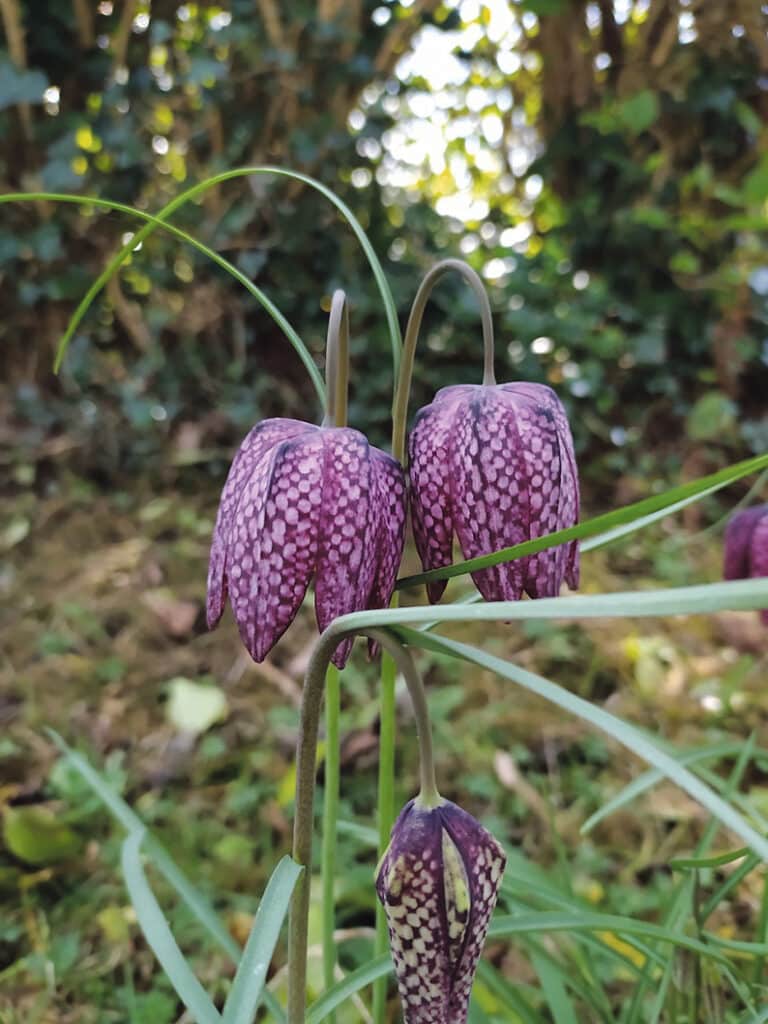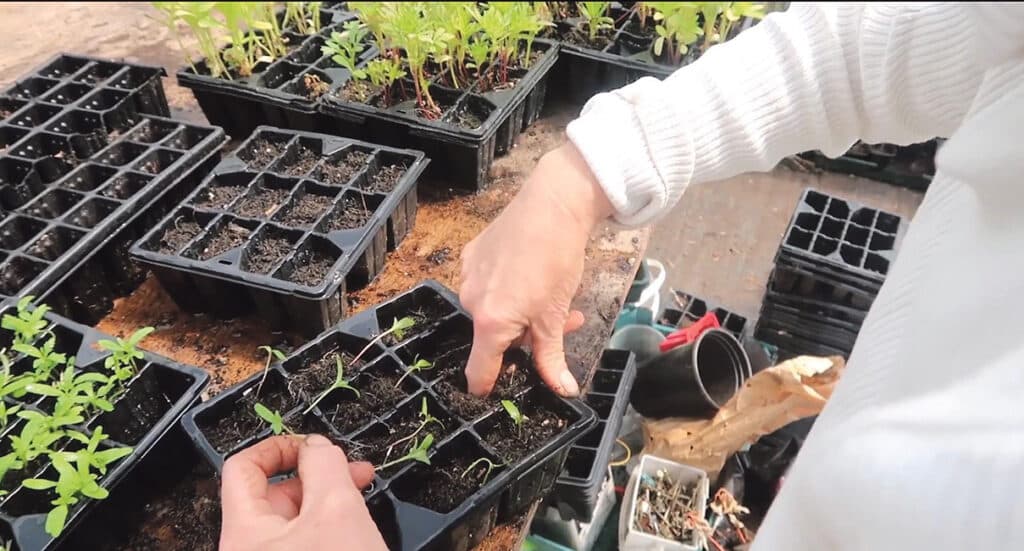I’m waking up earlier and earlier these days, which is just as well, as there is so much to do in the garden in spring. Most mornings it is a joy to be up and outside with the only distraction being birdsong. No traffic noise or phones ringing, just mooching about, checking the propagator to see if anything has germinated overnight, or if we’ve had another overnight visit from mice or slugs. In the outside garden there is lots to see already, lots of narcissus, tulips and my favourites at the moment fritillaria meleagris or snakehead fritillary. Over the last few years I have planted some each autumn in grass alongside a shaded path and they are so exotic at this time of year. The flowers are mostly dark purple with an almost chequered pattern, though occasionally a white variety pops up. These nectar rich flowers provide early sustenance for bumblebees and are easy to grow in grass or woodland edges. They are relatively inexpensive and the bulbs are available from most specialist bulb suppliers in the autumn. I have been planting some each autumn for the last three years and they seem to return reliably each year.

Spring is my favourite season, bringing daily changes to the garden, but the workload can also be overwhelming. I am at an age where I have to try to pace myself a little, and one sunny day when I lose track of time and the dog has to come and find me to remind me it’s dinner time, can lead to a day or even two of recovery. But timing is everything with jobs such as pricking out and potting on tomatoes, so I try to prioritise by pricking at least a couple of trays of salad or annual flowers each day, and gradually working through the 25 varieties of tomatoes we grow. There is also keeping up with the sowing of vegetable seeds, it pays to be organised, a trait I am not generally known for. My loved ones will tell you that this is an understatement. My greatest aid in organising my sowing plan is a planting by the moon calendar. This year I have found one that is in the form of a large poster, decorative enough to pin up on the kitchen wall, which so far has already saved me hours as I haven’t had to search for the book most days which was my normal way of doing things. Whether you believe in the efficacy of planting by moon cycles or not, it certainly puts some structure into sowing plans. I know for instance that today, as I write, is a fruit day and I could sow peas, beans or cucumbers and so on; and by the weekend it will be a root day, ideal for planting potatoes, parsnips or any other root crop. You could explore the subject further, for instance whether it’s a waxing or waning moon, but I am definitely not qualified to go into more detail. I just know it works for me and I follow the instructions.
Spring is also blossom time and the first thing to blossom in my garden was a wild cherry, prunus ‘Woodfield Cluster’. I cherish this plant for its tenacity as well as its really pretty white blossom. I can’t call it a tree, as it was inadvertently pruned, when only a couple of years old. It wasn’t done by me; least said soonest mended. Then it was caught by the strimmer; I don’t use the strimmer either. It is now more or less a shrub, but quite beautiful in full blossom and I saw my first bumblebee of the season happily feasting inside one of its flowers. Long may it survive!


